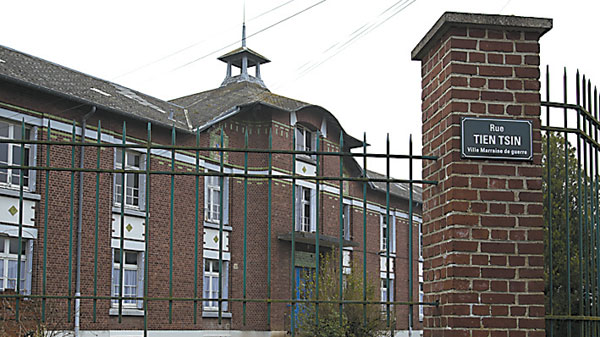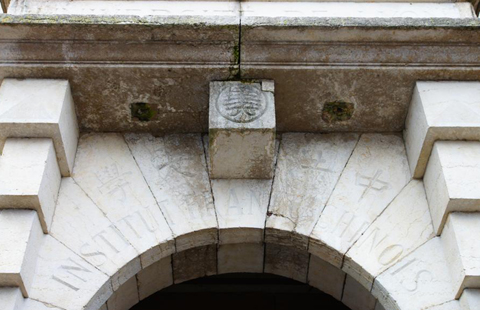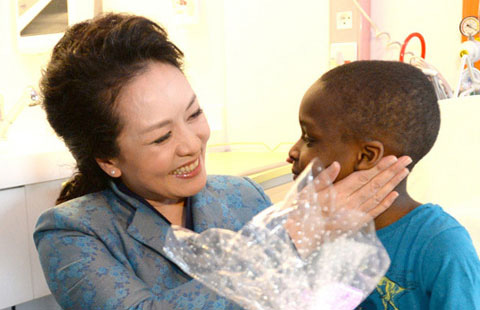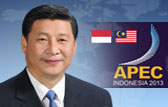
Mayor rekindles historical link with Tianjin
Updated: 2014-03-27 08:29
By Li Xiang in Albert, France (China Daily)
Comments Print Mail Large Medium SmallCity in North China raised money to rebuild French town after WWI
Rue de Tien Tsin (Tianjin Street) in Albert, northern France, does not appear to be strikingly different from the streets of any other French town, except for its name.
Tianjin Street marks a historical link with the city in northern China that helped rebuild Albert following its destruction during World War I.
| ?
 |
|
?Rue de Tien Tsin in Albert, northern France, was rebuilt after World War I with donations from residents in Tianjin. |
Stephane Demilly, the mayor of Albert, is hoping to renew the historical connection the two communities had nearly a century ago, a connection that he sees as a symbol of Sino-French friendship.
Albert, with a current population of 10,000, was a key location in the Battle of the Somme, which lasted from July to November 1916 and was one of the largest of WWI. More than 1.3 million people were wounded or killed, making the battle one of the bloodiest battles in history.
By the end of the conflict, Albert was in ruins and the local people were in desperate need of help to rebuild.
Half a world away in Tianjin, the port city 110 kilometers southeast of Beijing, an association was formed to collect donations for relief work in war-torn Europe. More than 20,000 people in Tianjin, home to several Western concession areas, helped raise money.
Due to the efforts of a French engineer named Pernaut who was a resident of Albert, the French town became a beneficiary of donations that would help with the city's reconstruction.
The money from Tianjin financed the reconstruction of Albert's hospital and the main street leading to it. Three other cities - Birmingham, England; Ain Temouchent, Algeria; and Bordeaux, France - also provided financial support that was crucial to rebuilding the town.
"We are not just a city marked by wars in its history. We are also a city that knows what the word 'solidarity' really means," Demilly said.
Demilly learned about the city's historical connection to Tianjin when he was first elected mayor in 1989, at the age of 26. He also felt a personal connection to WWI, because his great-grandfather fought in the war and died in 1916.
Today, almost a century after the two cities were linked by the war, Demilly thinks the time has finally come to reconnect. The town will hold a series of events to commemorate the 100th anniversary of WWI, which Demilly sees as a great occasion to rekindle people's memories and the story of Albert's rebirth.
"The year 1916 is the most important and dramatic year for WWI. So in 2016, we hope to receive guests from Tianjin to be present at our commemorative events and to express our gratitude," he said.
For Pierre Lavoisier, a longtime resident of Rue Tien Tsin, the origin of the street and its historic connection with the Chinese city have remained dear to the locals.
"Nothing has changed much here, although some new buildings have been built behind the street," said Lavoisier, 86, a retired worker for Airbus SAS.
He has lived on the street with his family for almost half a century.
"We know that there was quite a large French community in Tianjin at the time when the war broke out. And money was collected from Tianjin to rebuild the hospital and the street which was named after it," he said.
Many residents of Albert, especially the younger generation, are not aware of the history, Demilly said.
"We want to reach more young people because we don't want them to forget what happened during the war and who helped us," he said. Today, about 60 percent of tourists to Albert are from the United Kingdom, Demilly said. But he hopes to see more visitors from China, especially from Tianjin, in the coming years.
"They helped us rebuild our home, so in a sense the town also belongs to them," he said.
Contact the writer at lixiang@chinadaily.com.cn






